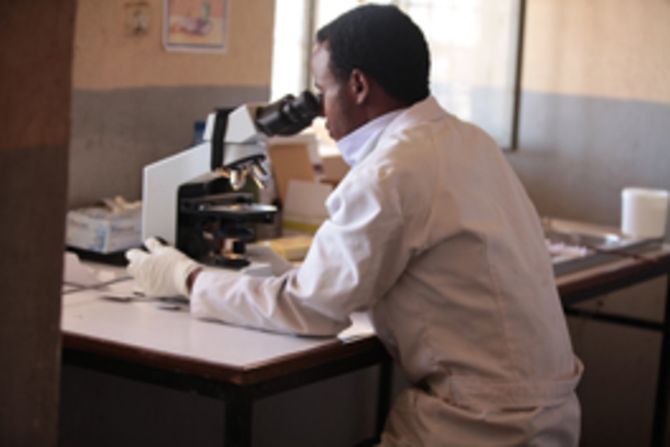DAHW, Deutsche Lepra- und Tuberkulosehilfe e.V., is demanding investment in research into the transmission routes and vaccines for leprosy On World Leprosy Day Burkard Kömm, Director of the relief organisation domiciled in Würzburg, points out that over 230,000 people contract leprosy every year although the disease is classified as having been “eliminated”.
As the DAHW Director states the “elimination” is merely a statistical variable used by the World Health Organisation, the limit being one patient per 10,000 inhabitants: “If there were 350 patients with leprosy in Berlin, the disease would be said to have been eliminated there, no matter what the citizens of Berlin have to say about it.”
Due to the statistical definition, leprosy moves further away, escaping the attention of health politics. One consequence of this according to Kömm is that there are now virtually no more funds, even if – for example like after the wars in Liberia or South Sudan – a completely new leprosy programme must be set up.
More new cases of leprosy again
The number of new cases has risen slightly, probably to a little over 230,000. In 2011 96 countries reported a total of 219,075 patients to the WHO (2010: 228,474 patients from 117 countries)- Among the countries which have not yet reported any figures for 2011 are Ethiopia, Nigeria and Tanzania; in 2010 they accounted for almost 11,000 new cases.
“Leprosy is considered unprogressive and therefore hardly any governments want to have anything to do with it,” is the conclusion drawn by DAHW director Kömm. But this could be changed if there were incentives to do so: “If wealthy countries like Germany begin to invest in leprosy research or the implementation of programmes and projects, this disease would no longer have to be hidden away.”
This is also a consequence of the stigma that typically surrounds leprosy. Besides structural disadvantages, Kömm also focuses especially on the responsibility to not abandon the people affected. “People with leprosy are still being ostracised and have hardly any chance of taking part in society. This is the huge mission facing us at DAHW today.”
DAHW will set a good example and itself invest over EUR 150,000 in leprosy research. Together with funds from partner organisations in the USA, the Netherlands and Canada, in future leprosy research will have almost EUR 500,000 at its disposal each year.
In 2011 over 260,000 people affected by leprosy found help in the DAHW projects. This included many former patients who have to live with disabilities which are the long-term effects of leprosy, as well as 40,000 who have contracted it at present; that is almost 20 % of all patients registered worldwide.



